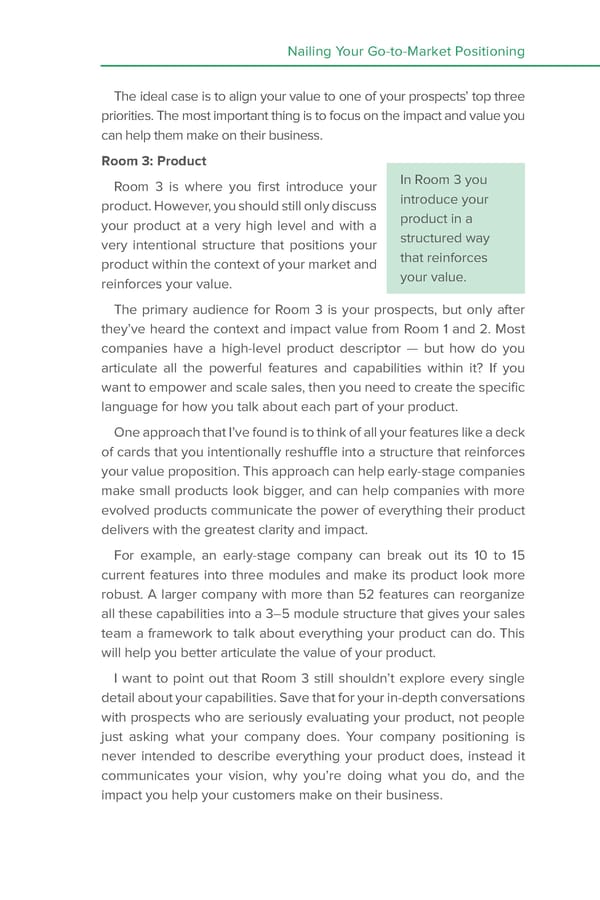Chapter 5 Nailing Your Go-to-Market Positioning The ideal case is to align your value to one of your prospects’ top three priorities. The most important thing is to focus on the impact and value you can help them make on their business. Room 3: Product Room 3 is where you first introduce your In Room 3 you product. However, you should still only discuss introduce your your product at a very high level and with a product in a very intentional structure that positions your structured way product within the context of your market and that reinforces reinforces your value. your value. The primary audience for Room 3 is your prospects, but only after they’ve heard the context and impact value from Room 1 and 2. Most companies have a high-level product descriptor — but how do you articulate all the powerful features and capabilities within it? If you want to empower and scale sales, then you need to create the specific language for how you talk about each part of your product. One approach that I’ve found is to think of all your features like a deck of cards that you intentionally reshuffle into a structure that reinforces your value proposition. This approach can help early-stage companies make small products look bigger, and can help companies with more evolved products communicate the power of everything their product delivers with the greatest clarity and impact. For example, an early-stage company can break out its 10 to 15 current features into three modules and make its product look more robust. A larger company with more than 52 features can reorganize all these capabilities into a 3–5 module structure that gives your sales team a framework to talk about everything your product can do. This will help you better articulate the value of your product. I want to point out that Room 3 still shouldn’t explore every single detail about your capabilities. Save that for your in-depth conversations with prospects who are seriously evaluating your product, not people just asking what your company does. Your company positioning is never intended to describe everything your product does, instead it communicates your vision, why you’re doing what you do, and the impact you help your customers make on their business.
 Nailing Your Go-to-Market Positioning Page 9 Page 11
Nailing Your Go-to-Market Positioning Page 9 Page 11